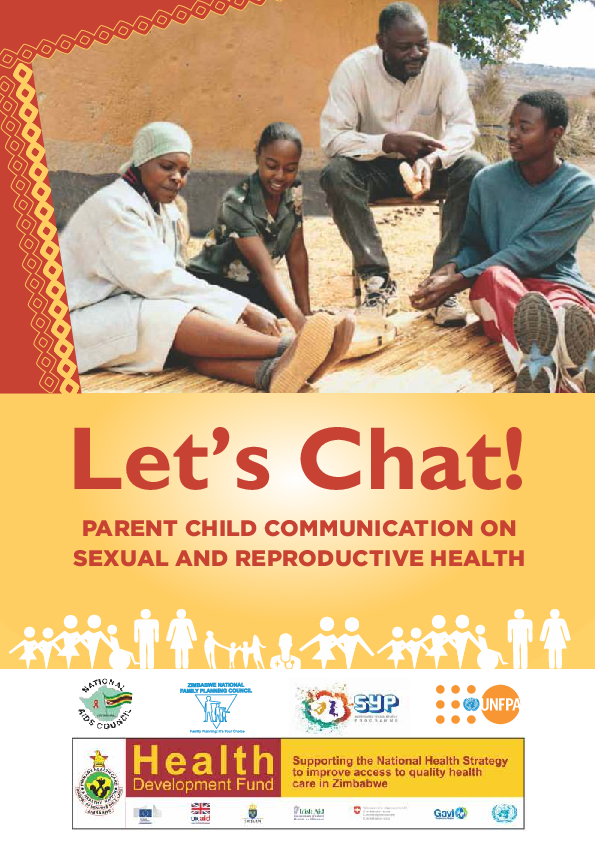You are here
New Releases
The Power of Choice: Reproductive Rights and the Demographic Transition
Not so long ago, most people had large families: five children, on average. Where once there was one global fertility rate, today there are many, with differences wider than at any point in human history.
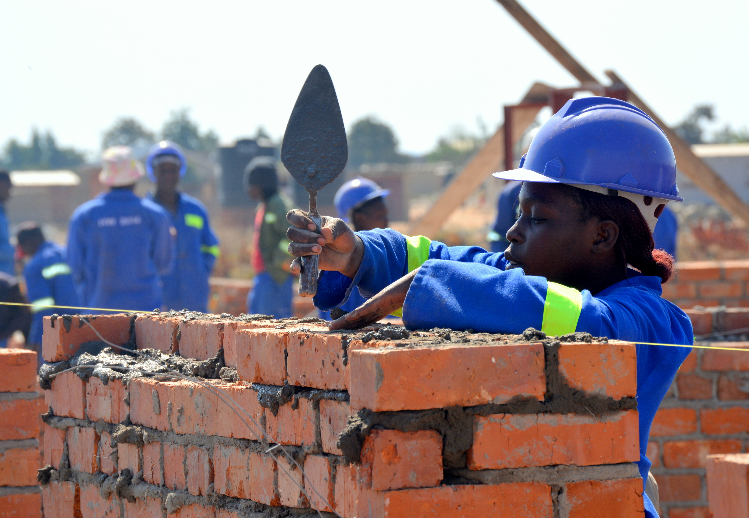
Joint Program on Adolescents and Youth Development Participatory Needs Assessment in Hopley Report April 2017 (UNFPA)
Following selection of JPAYD focus age groups and districts, UNFPA commissioned an integrated quantitative and qualitative baseline needs assessment in one target community. Hopley is a peri-urban district located on the outskirts of Harare, and is characterised by high levels of migration, poor infrastructure, and low education and employment rates. The purpose of the needs assessment was to collect statistical information on key indicators that the JPAYD hopes to impact over the course of the programme (e.g. adolescent fertility rates, HIV prevention, experiences of violence, etc.) as well as to gain a deeper understanding of young people’s experiences of marginalisation and vulnerability.
The study was thus composed of both a cross-sectional survey to set a representative benchmark for change over time, and a rapid participatory appraisal to capture young people’s own perceptions of the barriers and challenges they confront prior to introduction of JPAYD activities.
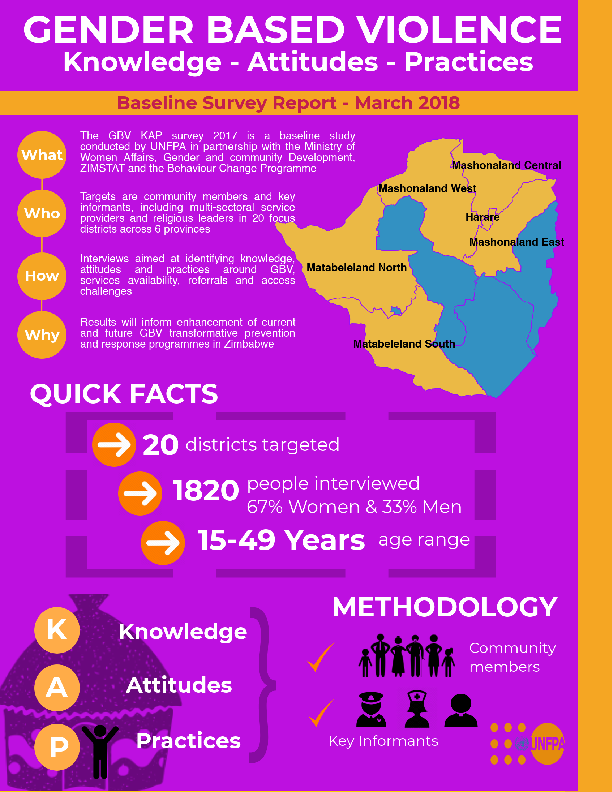
Fact Sheet Gender Based Violence Knowledge Attitudes Practices Baseline Survey Report - March 2018
The GBV KAP Survey 2017 is a baseline study conducted by UNFPA in partnership with the Ministry of Women Affairs, Gender and community Development, ZIMSTAT and the Behaviour Change Programme. Targets are community members and key informants, including multi-sectoral service providers and religious leaders in 20 focus districts across 6 provinces. Interviews aimed at identifying knowledge, attitudes and practices around GBV, services availability, referrals and access challenges. Results will inform enhancement of current and future GBV transformative prevention and response programmes in Zimbabwe
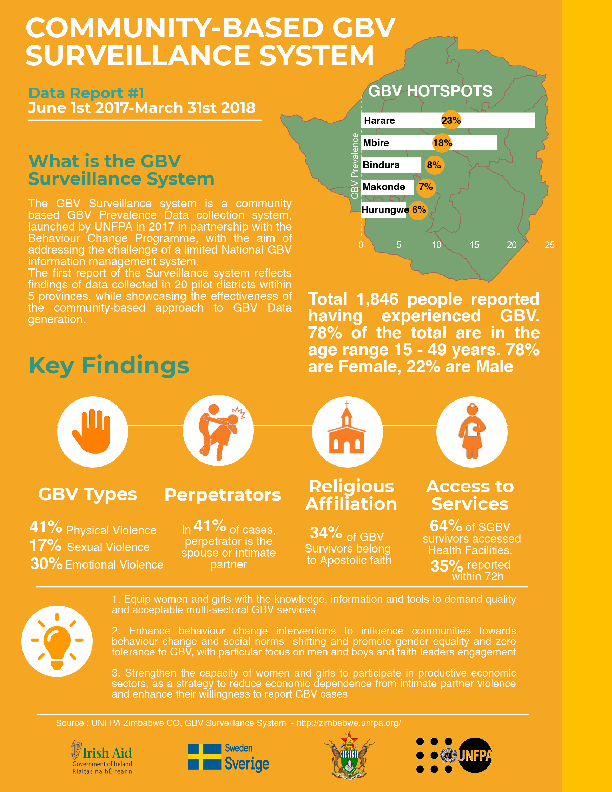
Fact Sheet Community-Based Gender Based Violence Surveillance System Report June 1 2017 - March 31 2018
The GBV Surveillance system is a community based GBV Prevalence Data collection system, launched by UNFPA in 2017 in partnership with the Behaviour Change Programme, with the aim of addressing the challenge of a limited National GBV information management system. The first report of the Surveillance system reflects findings of data collected in 20 pilot districts within 5 provinces, while showcasing the effectiveness of the community-based approach to GBV Data generation.
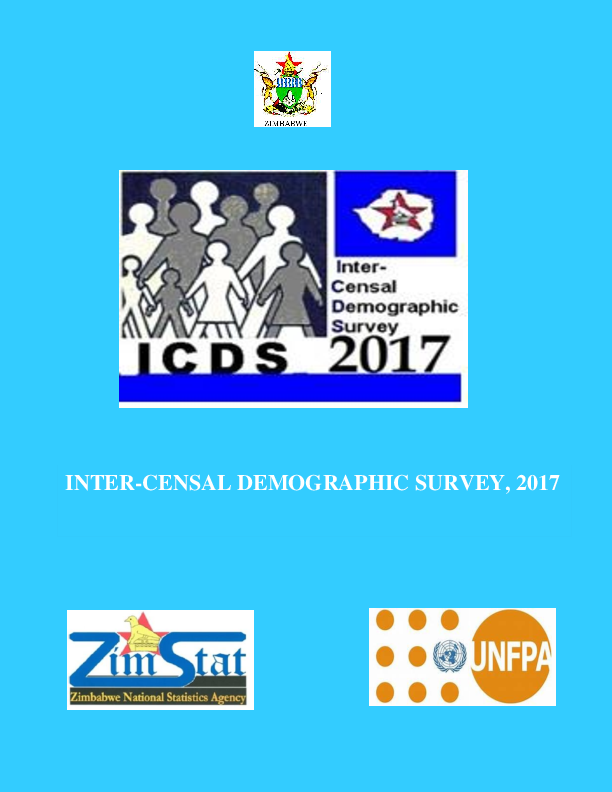
Inter-Censal Demographic Survey 2017 Report
Inter-censal demographic surveys are carried out five years after a decennial Population and Housing Census. The 2017 ICDS was therefore carried out five years after the 2012 Population Census to update data collected during the census as well as kick start preparations for the 2022 Population Census. Although the Government of Zimbabwe will implement all the 17 SDG goals as they are deemed to be important to the country, in terms of focus and prioritisation, ten of these were adopted. ZIMSTAT, as the Agency responsible for the production of official statistics is mandated to provide data for monitoring the prioritised SDGs through its routine surveys and censuses.
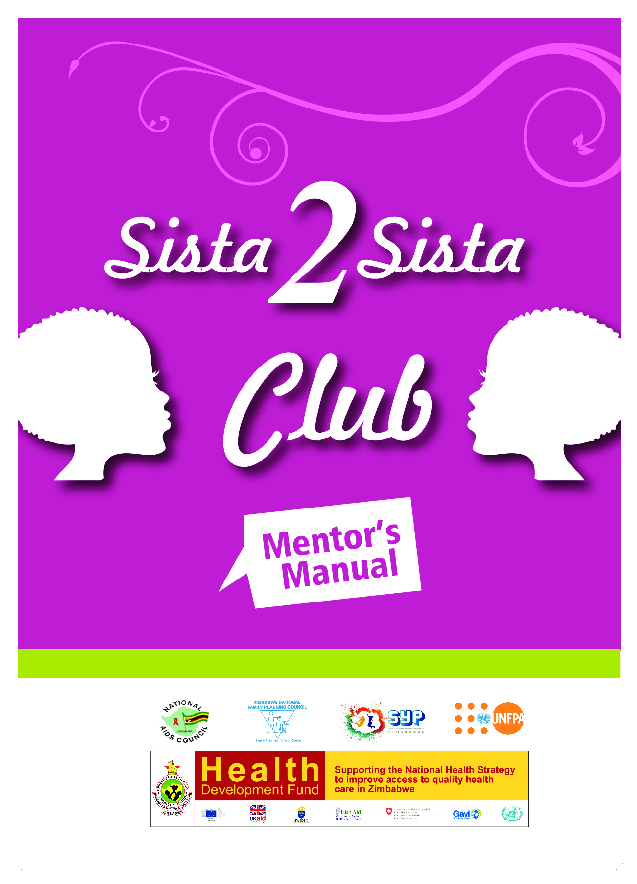
Sista2Sista Mentors Manual
Recognising that reproductive health choices, and actions in fulfilling the same, are not made in a socio-economic vacuum, this manual moves from providing information on sexual and reproductive health and prevention of HIV as well as sexual and gender based violence, to providing the young women with life skills such as self-awareness, problem-solving strategies, and communication. These skills will enhance the girls’ and young women’s ability in decision making not only about their reproductive health, but for other important life choices. To that end, the manual has been updated and in addition to introducing the girls and young women to the concepts of financial management, social and livelihoods skills are now included.
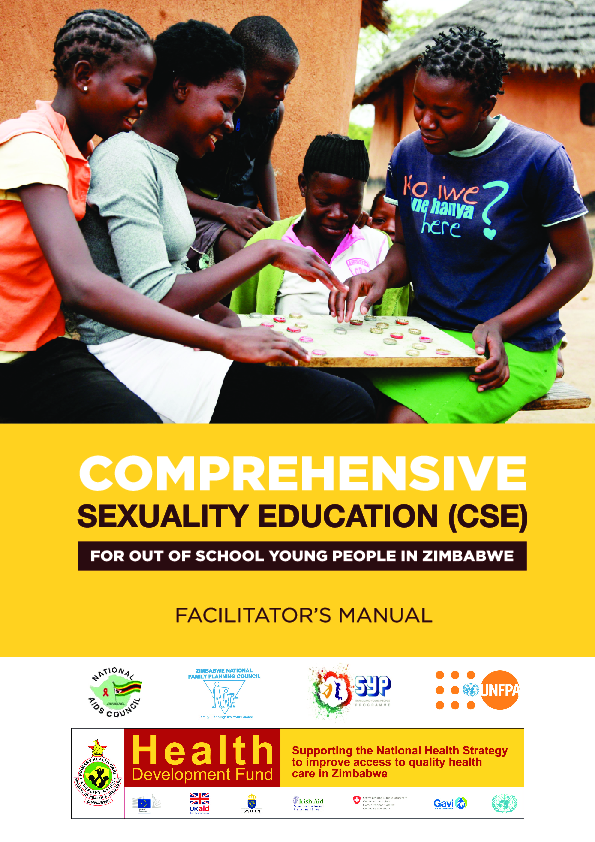
Comprehensive Sexuality Education Facilitators Manual final
Community based youth leaders or mentors will deliver the manual as the main resource to engage young people by providing them with correct information, challenging them to look at their own attitudes and behaviours, helping them to develop the skills they need to adopt health behaviours and to remain safe. While it is recognised that changing an individual’s behaviour remains the responsibility of that individual, creating an environment that supports and encourages positive behaviour change requires effort and commitment from a multitude of players. The Community Health Workers (CHWs) as mentors in the CSE groups are key agents in this endeavour. However, the group members are also key contributors to building change in their own and their fellow group members’ lives. Providing information and education is only one component of infl uencing change of an individual’s behaviour.
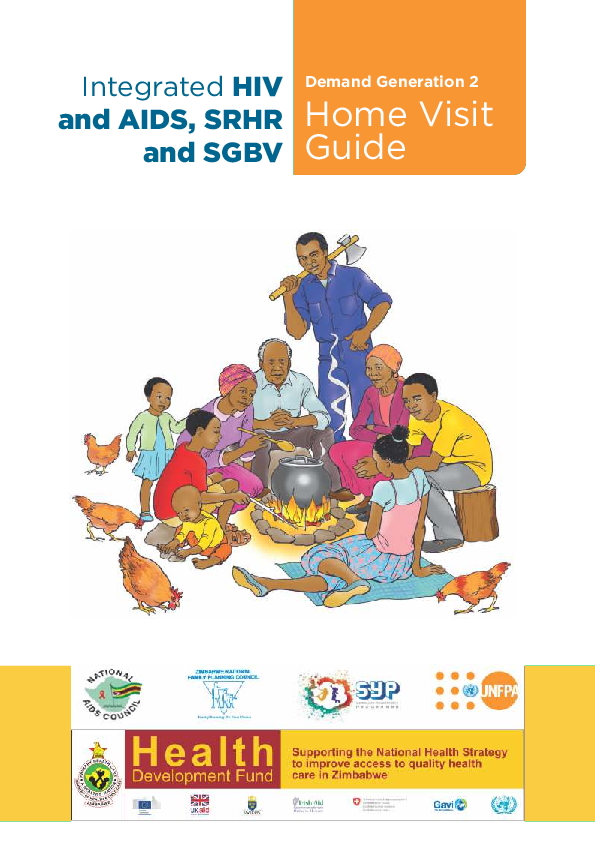
Home Visit Guide HIVAIDS, SRHR and SGBV final
The Social and Behaviour Change Communication (SBCC) Programme is consistent with the National Health Strategy for Zimbabwe 2016-2020, the Zimbabwe National Family Planning Strategy (ZNFPS) 2016-2020, the Extended Zimbabwe National HIV and AIDS Strategic Plan (ZNASP) 2015-2020, the National Adolescent and Youth Sexual and Reproductive Health (ASRH) Strategy II: 2016-2020, and the Zimbabwe National Gender Based Violence Strategy 2012-2015. The overall goal of the SBCC Programme is to contribute to improving sexual and reproductive health through reducing the incidence of maternal morbidity and mortality among women, cervical cancer, HIV and SGBV. This will ultimately contribute to Ministry of Health and Child Care's vision “to have the highest possible level of health and quality of life for all Zimbabweans”. The programme will also promote attainment of the Zimbabwe Agenda for Sustainable Socio-Economic Transformation (ZimAsset) and the Sustainable Development Goals (SDGs).
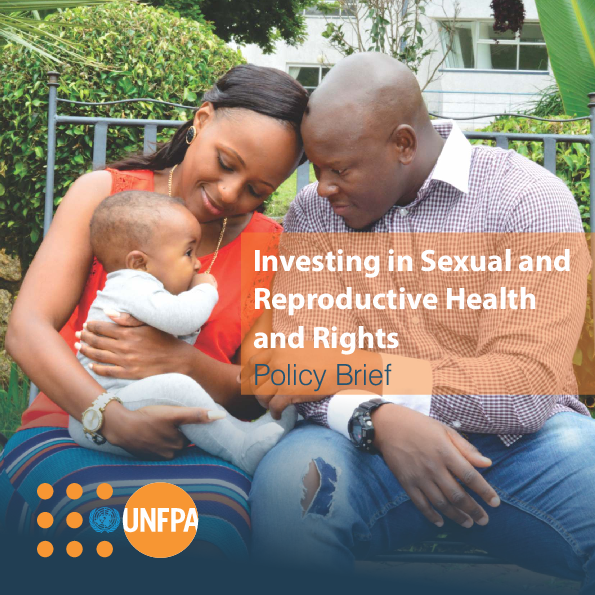
Policy Brief - Investing in Sexual and Reproductive Health and Rights
The new 2030 development agenda of the Sustainable Development Goals calls on all of us to step up our efforts in our areas of work to meet targets set. Indeed meeting these targets and achieving positive outcomes in the area of Sexual Reproductive Health requires huge investment and c o l l a b o r a This booklet highlights in greater detail some of the areas requiring our attention as various stakeholders and investment and support for improved outcomes on maternal health, particularly the prevention and treatment of cervical cancer and fistula, access to family planning, young people’s development and prevention and response to Gender Based Violence by all key stakeholders.
In Zimbabwe the new development agenda presents opportunities for achieving these positive outcomes. We know that many women and girls are dying from complications of child birth. At estimated 8 women and girls die every day due to pregnancy complications. Many other women and girls suffer serious birth injuries such as fistula. It is well known that every maternal death is associated with 20 to 50 cases of severe maternal morbidity or injuries. Until 2 years ago, women living with fistula could not receive treatment. We are now reaching women with life changing surgery but we still need to reach much more.
This booklet highlights in greater detail some of the areas requiring our attention as various stakeholders and investment and support for improved outcomes on maternal health, particularly the prevention and treatment of cervical cancer and fistula, access to family planning, young people’s development and prevention and response to Gender Based Violence.
The new 2030 development agenda of the Sustainable Development Goals calls on all of us to step up our efforts in our areas of work to meet targets set. Indeed meeting these targets and achieving positive outcomes in the area of Sexual Reproductive Health requires huge investment and c o l l a b o r a This booklet highlights in greater detail some of the areas requiring our attention as various stakeholders and investment and support for improved outcomes on maternal health, particularly the prevention and treatment of cervical cancer and fistula, access to family planning, young people’s development and prevention and response to Gender Based Violence by all key stakeholders.
In Zimbabwe the new development agenda presents opportunities for achieving these positive outcomes. We know that many women and girls are dying from complications of child birth. At estimated 8 women and girls die every day due to pregnancy complications. Many other women and girls suffer serious birth injuries such as fistula. It is well known that every maternal death is associated with 20 to 50 cases of severe maternal morbidity or injuries. Until 2 years ago, women living with fistula could not receive treatment. We are now reaching women with life changing surgery but we still need to reach much more.
This booklet highlights in greater detail some of the areas requiring our attention as various stakeholders and investment and support for improved outcomes on maternal health, particularly the prevention and treatment of cervical cancer and fistula, access to family planning, young people’s development and prevention and response to Gender Based Violence.
The new 2030 development agenda of the Sustainable Development Goals calls on all of us to step up our efforts in our areas of work to meet targets set. Indeed meeting these targets and achieving positive outcomes in the area of Sexual Reproductive Health requires huge investment and c o l l a b o r a This booklet highlights in greater detail some of the areas requiring our attention as various stakeholders and investment and support for improved outcomes on maternal health, particularly the prevention and treatment of cervical cancer and fistula, access to family planning, young people’s development and prevention and response to Gender Based Violence by all key stakeholders.
In Zimbabwe the new development agenda presents opportunities for achieving these positive outcomes. We know that many women and girls are dying from complications of child birth. At estimated 8 women and girls die every day due to pregnancy complications. Many other women and girls suffer serious birth injuries such as fistula. It is well known that every maternal death is associated with 20 to 50 cases of severe maternal morbidity or injuries. Until 2 years ago, women living with fistula could not receive treatment. We are now reaching women with life changing surgery but we still need to reach much more.
This booklet highlights in greater detail some of the areas requiring our attention as various stakeholders and investment and support for improved outcomes on maternal health, particularly the prevention and treatment of cervical cancer and fistula, access to family planning, young people’s development and prevention and response to Gender Based Violence.
